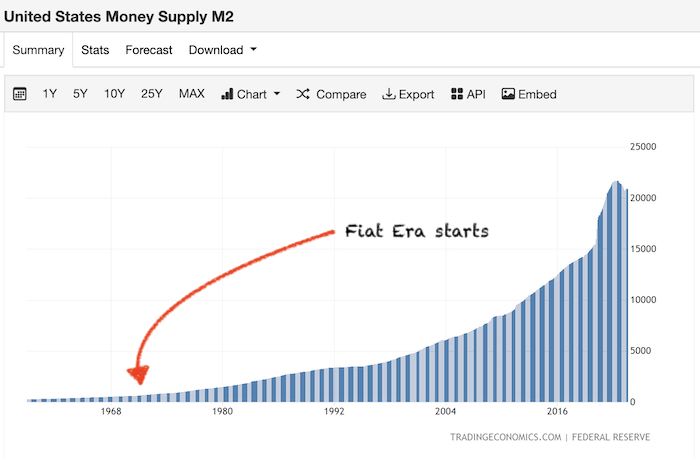by Mark E. Jeftovic, Bombthrower:

What we now call “The Cantillon Effect” was known far back as circa-1730, by at least one economist. It hasn’t been taken very seriously in modern times, especially here in the fiat age.
Named after its author, Richard Cantillon, in his “Essay on Economic Theory” (“Essai sur la Nature du Commerce en Général”) — it is his only surviving work and was published posthumously in 1755, more than 20 years after he was murdered by a former cook whom he had dismissed from his household. The disgruntled ex-employee, returned by night, robbed his home, then set it ablaze, with Cantillon — and the rest of his manuscripts, within.
TRUTH LIVES on at https://sgtreport.tv/
The Essay On Economic Theory had been previously circulated in pamphlet form, which is why copies survived to be published to the world, and lays bare the dirty secret behind all fiat monetary schemes:
In a nutshell, when money is created or added to an economy, the people who receive it first, benefit, but they do so to the detriment of everybody else.
The early recipients of new money were able to spend it on accumulating more of the productive assets that society had to offer. But this also increased the money supply, which diluted the purchasing power of everybody else’s existing money.
The wealthy got to invest new money.
Everybody else had to spend more of their existing money.
So, while the rich got richer, it made it more expensive for the poors to stay alive.

The elites invariably believe the system works great. From inside their bubble it certainly seems that way. But it is unsustainable over the long haul. As the dynamic iterates, it accelerates, and it increases wealth disparity. If there was a nice, meaty middle-class in the economic bell curve, it wouldn’t last for long as the productive assets increasingly get hoovered up by a rentier class using new money.
Eventually wealth inequality hits a breaking point, and when that happens, all existing social contracts – real or implied – break down.

The French Revolution may be the first example of the Cantillon Effect’s consequences, after Cantillon himself detailed its underlying dynamics.
The distortions introduced from currency debasement are far reaching and take a long time to play out. But the tempo intensifies toward a “quickening” as it enters the end game, much like compound interest and bankruptcy (“gradually, then suddenly”). The rich become more imperious, the poor more resentful and then, finally, after generations of silent theft and economic repression, something sets off a phase shift — and then it’s show trials and guillotines.
In France’s case, the monetary missteps that set it on a course to Bastille Day went at least as far back as Louis XIV, the great-great-grandfather of the Sun King who would be left holding the bag (and his head in a bucket) nearly a century later.
In Guy Rowlands “The Financial Decline of a Great Power: War, Influence and Money in Louis XIV’s France“, we are told of “dimunitions” which devalued the coin of the realm by decree, (nevermind that it was gold and silver backed)…
The government would typically prepare an augmentation by decreeing diminutions—or abatements’—of the coins in circulation, a decision that did not require coins to be restamped or re-created. This was not primarily so the king could pull in more coins through taxation (denominated in Livres),” as any such gain would be cancelled out: a diminution would in fact also force the king to compensate his fisco-financiers and bankers for losses on their contracts and on the coins they held at the time. ‘
The main reason was so there could be huge leaps upward in the value of the coins to the level decreed by the subsequent augmentation, thus bringing in more seigniorage to the king. The government also hoped that a diminution, generating fear of further diminutions, would flush coin out into circulation, particularly for lending to the fisco-financiers.
That is why diminutions were announced in advance, with weeks or even months before the new, lower values would come into effect. This gave people a window in which to lend out their assets. There were indeed often several diminutions in a row: prior to the 1693 augmentation, the values of the coins were diminished four times; and prior to the great recoinage of 1709, diminutions were announced in March and November 1708 and on 16 March 1709.
The state never brought the coin values back down to the level they bad been before the previous augmentation, and this was important to ensure the public did not think the bottom of the valuation had been reached.”
Does any of this sound familiar?
Cantillon on steroids: The Fiat Era & Stakeholder Capitalism
“Let them eat brioche” — Marie Antoinette, 1789
“You will eat bugs, own nothing, and live in a pod” — The World Economic Forum, every day.
With the fiat era, starting in 1971, new money was no longer limited by the supply of gold, or whatever else was backing a currency. You could print the stuff right out of thin air now – which meant that instead of ostensibly enriching all members of society, with its “targeted inflation” for expanding the money supply, it would just accelerate the rate at which the underclass was being impoverished (which for a long time could be papered over with “hedonic adjustments” when reporting on it).
The Global Financial Crisis in 2008, followed by over a decade of ZIRP, NIRP, and QEternity, overclocked that process, and then Covid hit, when it went literally parabolic:

On its own, this may look like just another hockey stick graph. Most people don’t make the connection on exactly how this manifests in the real world (especially central bankers).
There is no subtler, no surer means of overturning the existing basis of society than to debauch the currency. The process engages all the hidden forces of economic law on the side of destruction, and does it in a manner which not one man in a million is able to diagnose.
— John Maynard Keynes
(Even fewer people realize that Keynes was a Marxist and his economic prescriptions, which form the basis of conventional economic theory to this day, would bring lead to socialism. This was intentional. Especially once you understand what socialism really is.)



